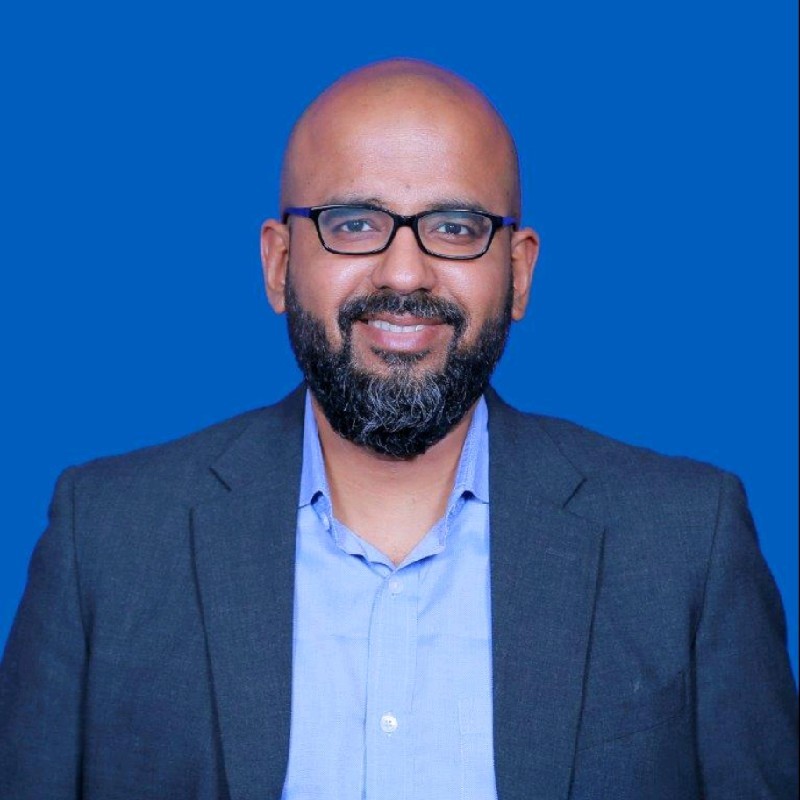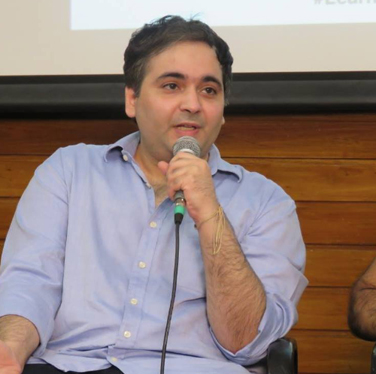Following the explosive growth witnessed in 2022, where as per FICCI E&Y report online gaming emerged as the fourth largest segment within India’s Media and Entertainment (M&E) sector, AnimationXpress’ exploration continues into the dynamic landscape of the Indian gaming industry.
In this second installment of our gaming yearender, we delve deeper, engaging with game developers and studios to uncover the challenges encountered throughout 2023. From navigating talent shortages to grappling with regulatory complexities, we examine how these obstacles were surmounted through tailored workflows and the strategic integration of AI. Additionally, we cast a forward glance towards 2024, envisioning the trajectory of the Indian gaming industry amidst evolving trends and aspirations.
Challenges faced by Indian studios
Indian game development studios faced the below major challenges:
- Talent crunch
“The rapid growth of the industry outpaced the development of skilled professionals. There was a shortage of qualified game developers, artists, animators, and programmers, hindering the creation of high-quality games and hindering global competitiveness,” said a JioGames spokesperson.
“The talent shortage in areas like game design and development, and regulatory complexities, while challenging, also catalysed opportunities for advancement,” said JetSynthesys chief strategy officer Girish Menon. “The industry can bridge the skill gap through targeted educational programs and partnerships.”
- Lack of funds
“While the industry has shown remarkable growth potential, accessing consistent and substantial funding remains a hurdle for many studios. This scarcity of financial resources often impacts the ability to invest in cutting-edge technology, marketing efforts, and overall game development,” said the JioGames spokesperson.
- Government policies
The GST imposition on online gaming, which initially seemed to broadly impact the gaming sector, was a major issue, but further clarifications revealed that this predominantly affected Real Money Gaming (RMG) companies and not the gaming and esports industry, said Menon.
“Engaging with regulatory bodies could lead to more supportive policies, and adapting to tax reforms can strengthen the sector,” he suggested. “These proactive steps, along with the industry’s robust growth, demonstrate a positive trajectory for overcoming obstacles and fostering sustainable development.”
Adopting need-specific workflows
Indie studios adopted various techniques to navigate the challenges in game development, and altered their workflows.
Delhi-based studio Lucid Labs released its puzzle adventure game Bloom in 2023. The studio founder Chirag Chopra shared, “The reason we call Bloom our most ambitious game is because, as a studio, it’s a big jump from what we’ve shipped in the past. Apart from improving the production quality, aesthetics, and the business model, this time, we’ve spent a lot of time building a network layer on top of the game, which allows players to make and publish their own levels, and player levels created by the community – all within the game. Building this social element in the form of UGC (user-generated content) was one of the studio’s goals, and we are proud to see it working so well and being praised by the community.”
On SuperGaming’s battle royale game Indus, the studio’s communications manager Rishi Alwani said, “A real-time multiplayer game with 60 plus players is an elaborate effort with different components and intricacies. What’s more is, players usually only see the final product and don’t have a say on how it could be improved until it’s out and they post a user review.
We wanted to solve these two issues. Taking a grassroots approach to game development was the answer. For one, it helped us shape Indus‘ product roadmap. From player reactions to character designs, weapons, and environments as well as gameplay systems, we’re able to iterate and make our game better faster and in-line with what they want to see. At the same time, it allows us to focus on specific aspects that make Indus unique based on their feedback. This lets us craft an authentic experience tailored for Indian audiences and is our edge against the competition.
And then there’s the obvious advantage: curbing skyhigh game development costs. It’s no secret that games are expensive to make. By taking a grassroots approach we’re able to deliver an ambitious game at scale more efficiently and effectively as we’d have to spend less time and effort post-release by getting end-consumer feedback early on.”
AI integration in 2023, and potential impact in 2024
In 2023, the Indian gaming industry witnessed the impactful integration of AI. According to industry players, AI enhanced game development and player experiences by:
- Streamlining menial tasks
- Helping create dynamic game environments
- Helping personalise gameplay
“Looking to 2024, AI’s role is expected to grow, with advancements in predictive algorithms and game testing automation. This progress is anticipated to lead to more immersive and innovative gaming experiences, with an increased focus on ethical considerations,” said JetSynthesys’ Menon.
According to JioGames, AI will potentially redefine the way we play and create in 2024. “Expect dynamic worlds crafted by AIML (Artificial Intelligence Markup Language), hyper-realistic environments, and characters that learn and adapt with you. AIML will personalise your experience, from suggesting perfect games to crafting challenges tailor-made for your skill. Get ready for AI-powered game design tools that accelerate development and open doors for innovation,” said the company spokesperson.
AI is a powerful tool, however, it is crucial to dispel the notion that it will replace human resources entirely, said Ogre Head Studio founder Zain Fahadh.
He explained, “To draw a parallel, consider Google Docs – a tool that simplifies document drafting and sharing. Yet, it doesn’t replace the writer. Similarly, AI in gaming acts as an invaluable aid, contributing to task completion while acknowledging that the ultimate quality depends on human input. It’s an exceptional tool, amplifying the user’s capabilities rather than overshadowing them.
While we [Ogre head Studio] haven’t yet implemented AI directly into our production process, we recognise its potential as a search engine tool. It assists us in navigating complex problems and accessing information efficiently. Looking ahead to 2024, we foresee AI continuing to play a pivotal role in gaming, facilitating innovation and problem-solving while harmonising with human creativity and expertise.”
Diversity in Indian gaming industry
Skyesports developed an esports tournament IP – Skyesports Luna – specifically for women gamers. “Even on the developer side, we are noticing a growth in the number of women in gaming in India, which is in line with global trends,” Menon said.
JioGames organised the Reliance Digital Level Up BGMI Female invitational tournament on its JioGamesEsports platform. The company is also seeing a rise in female creators and gamers on its platform JioGamesWatch.

While the esports organisers launched tournaments specifically for women in 2023, it is important to note that diversity is not limited to only gender. It encompasses caste, class, religion as well as social background.
“With the accessibility of games to anyone with an internet connection, we’ve witnessed incredible inclusivity,” shared Menon. In JetSynthesys’ esports tournament Global e-Cricket Premier League, “we had participants breaking barriers – from someone who had lost an eye in an accident to an amputee, individuals belonging from the Indo-Pak border to people from metropolitan cities, successful professionals like doctors and engineers trying their hand in gaming, and many more. This diversity showcases the power of gaming to transcend physical and geographical boundaries, bringing people together from all walks of life to share a common passion,” he said.
To encourage diversity in games and esports, it is equally important to have a diverse team. Fahadh’s Ogre Head Studio has individuals from different parts of India. “The diversity within our team enriches our creative processes, bringing varied perspectives, experiences, and talents to the table. We believe that a diverse team is essential for fostering innovation and ensuring that our games resonate with a broad audience,” he shared.
“Many industry leaders are recognising the significance of promoting diversity and inclusivity, and efforts are being made to create more opportunities for underrepresented groups,” he added.
Studios share big plans for 2024
Game development studios are taking their 2023 learnings to 2024.
For Lucid Labs, the goal is to refine its internal pipelines, improve the timeline of its releases and ship quicker. Chopra said, “With Bloom, we’ve also spent time building internal frameworks and pipelines to maintain a reusable library of resources, allowing us to focus on solving new challenges instead of redoing the same things with each game.”
JioGames is gearing up for 2024 with two key initiatives.
- The company will be scaling its cloud gaming subscriptions by leveraging – 5G network and partnerships with Gamestream and Ubitus which offer a wider library of titles to a massive user base.
- The company plans to host large-scale esports tournaments in collaboration with global partners to attract international talent and viewership.
When Nodding Heads co-founder, game designer and project manager Avichal Singh visited IGDC 2023, he noticed that PC and console games was the biggest section. “I think that is enough encouragement for the developers to not keep following trends, and to explore new technologies and new platforms.”
He added, “There is a new wave of indie developers making PC and console games. Sony’s upcoming India Hero Project [also called PlayStation’s Develop_India event] which will identify and support emerging game developers in India is exciting to see in the gaming industry. Xbox Developer Accelerator Programme also exists along with the official presence of Xbox in India. This program supports porting, learning, and prototyping and provides funding for indie game devs. We are not putting blinkers and thinking that mobile gaming is the only industry. Developers are getting more and more open about drawing from their strengths and thinking about their passion, which is healthy.”
“Streaming and showcasing made-in-India games is not a question of if but a question of when,” said Alwani. “I’m looking forward to the day when my YouTube feeds are filled to the brim with videos of great games made by other game developers in India.”
This is the end of the second part of our yearender on the Indian gaming industry.
Read part 1 here: Insights from Indian game studios: Funding, monetisation, market dynamics, and player trends in 2023







